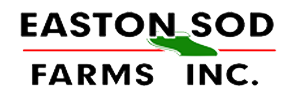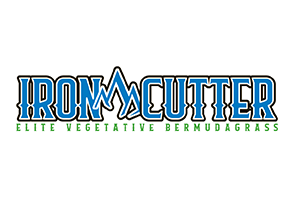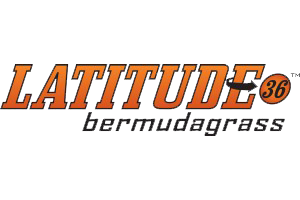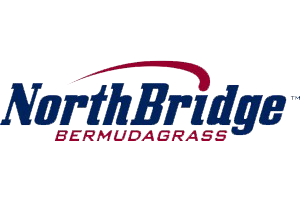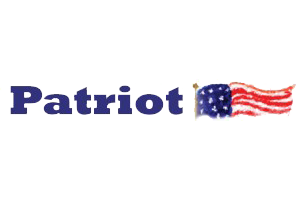Turfgrasses
We have more than 45 years of knowledge and no one knows more about sod then we do. We have been ranked one of the number choices when it comes different types of grasses in our area. We can help you find the right one by going over the types of grasses with you.
Choices include Buffalo Grass, Astro, Heartland Supreme Fescue, Patriot Grass and many more. Find the right grass for your project and call today!
Easton Sod Farms, Inc. is the number one spot for contractors and homeowners when it comes to purchasing a good amount of grass. You won’t find a more professional or passionate team then right here at Easton Sod Farms in Oklahoma. We are ready to help you in any way that we can! Meet with the team here at store and let us take you on a tour of the different types of the grass. Find the sod that is right for you at Easton Sod Farms today in Oklahoma and Kansas.
Easton Sod Farms, Inc. proudly uses the following brands of Sod
Check Out Our Variety of Sod Types
ASTRO BERMUDA GRASS
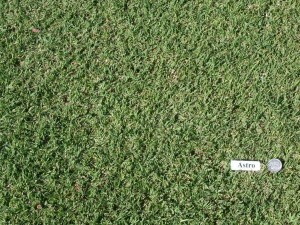
Astro Bermuda is a very dense and medium textured hybrid bermudagrass. It is low growing and spreads rapidly. Its density, fine texture and soft blades provide a soft cushion in which to walk and play. Astro demonstrates more aggressive damage recovery than most bermdagrasses and provides an extremely high quality turfgrass with dark green color. Recommended for residential and commercial landscapes, golf courses, parks and athletic fields.
SHADE TOLERANCE: Has high light requirement-requires full sunlight most of day. Should not be used in shady areas.
HEAT/COLD TOLERANCE: Has excellent heat tolerance. Not as cold tolerant as other turf type bermudas. See shaded portion of map below for suggested areas of use.
DORMANCY: Enters dormant stage in winter months. Stops growing when temperatures drop below 50F for sustained period, turns tan winter color. Requires 65F ground temperature for significant growth. Slightly slower green-up in spring than other turf type bermudas.
WATER REQUIREMENTS: Will tolerate sustained periods of drought if well established. However, responds well to irrigation during dry conditions if higher quality turfgrass desired. Should be kept moist during sustained periods of extreme cold.
Very good wear resistance and will withstand heavy traffic. Very good injury recovery-spreads rapidly by rhizomes in warm season.
CODY BUFFALOGRASS
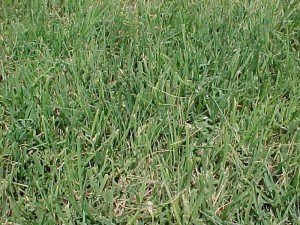
Easton Sod Farms offers Cody buffalograss as netted slab and big roll sod. Buffalograss is a warm season, native prairie grass. Many turf-like varieties have been recently developed and are now available. It is a warm season growing turfgrass with multiple use applications. It has a medium leaf texture that maintains a grayish-green color. It is recommended for low maintenance lawns, commercial sites, roadsides, athletic fields and golf courses.
SHADE TOLERANCE: Requires full sunlight. Should not be used in shaded areas.
HEAT/COLD TOLERANCE: Has excellent heat and cold tolerance – easily tolerates conditions in all the growing zones serviced by Easton Sod Farms
DORMANCY: Enters dormant stage in winter months.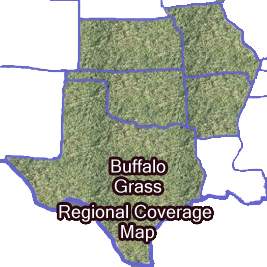
WATER REQUIREMENTS: Will tolerate sustained periods of drought if well established.
WEAR RESISTANCE-RECOVERY: It has good wear tolerance. It has a fairly shallow root system and should be limited to areas receiving moderate traffic. It spreads by rhizomes in warm season and has good recovery to injury.
RULES OF THUMB MAINTENANCE: The amount and frequency of watering, mowing and fertilizing depends upon the desired appearance of your turfgrass. Guidelines for maintenance procedures are offered below as good rules of thumb to follow on an as needed basis in maintaining healthy turfgrass with an attractive appearance.
WATERING: One of the most drought tolerant grasses available. After initial establishment, very little watering is required.
MOWING: Will tolerate frequent and close mowings or left unmaintained will grow to height of 5-6 inches. Recommended mowing height is 2 to 3 inches. Suggested not removing more than 1/3 of the leaf growth during a single mowing.
FERTILIZING: Apply 1 to 2 lbs per SF of a full analysis fertilizer containing nitrogen, phosphate and potassium; such as 19-19-19 twice per year. Suggest obtaining a soil test for specific fertilizer requirements.
WEED CONTROL: Weed growth competes with turfgrass growth. Good maintenance practices of your turfgrass helps eliminate weed problems. However, it may be necessary even under the best of turfgrass care, to apply herbicides to maintain weed free turfgrass. Contact your local County Extension agent or herbicide dealer for recommendations for your type turfgrass. Herbicides containing 2-4D may not be utilized for weed control on Buffalograss.
EL TORO ZOYSIA
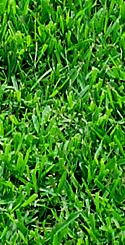 El Toro Zoysia is a flexible warm season turfgrass utilized for many applications. Its leaf texture is slightly more course than Meyers. El Toro has a faster growth habit than Meyers Z-52 and tolerates slightly more shaded conditions.
El Toro Zoysia is a flexible warm season turfgrass utilized for many applications. Its leaf texture is slightly more course than Meyers. El Toro has a faster growth habit than Meyers Z-52 and tolerates slightly more shaded conditions.
It provides a plush, high density, deep green cover mid-April through early October in the Southwest. Recommended for residential and commercial landscapes, golf courses, athletic fields and recreation areas.
SHADE TOLERANCE: Good shade adaptation. Tolerates areas up to 50% shade or filtered sunlight. Will not tolerate heavy shade.
HEAT/COLD TOLERANCE: Very good heat tolerance. Does not have the cold tolerance as Meyers Z-52 and should not be used North of Oklahoma. See shaded portion of map below for suggested areas of use.
DORMANCY: Enters dormant stage in winter months. Stops growing when temperatures drop below 55F for sustained period, turns tan winter color. Requires 65F ground temperature for significant growth.
WATER REQUIREMENTS: Is extreme drought tolerant. However, due to slow growing habit, should be watered regularly to encourage growth. Recommend 1-1 ½ inches of water in single applications about once per week during hot and dry conditions.
WEAR RESISTANCE-RECOVERY: Has good wear resistance of any turfgrass-tolerates heavy traffic. Spreads slowly by rhizome-slow to repair from injury.
MOWING: For a high quality appearance keep mowed height 1 to 2 inches. Mow regularly with a reel or rotary mower allowing the clippings to remain. Irregular mowing practices may result in high buildups of thatch, which will require verticutting , mulching or removal. Suggested not removing more than 1/3 of the leaf growth during a single mowing.
FERTILIZING: Apply 1lb per 1000 SF of full analysis fertilizer containing nitrogen, phosphate and potassium (such as 10-20-10) early March. Additional nitrogen may be applied in May, June and August at a rate of 1 lb per 1000 SF to encourage growth and maintain color. Suggest obtaining a soil test for specific fertilizer requirements.
HEARTLAND SUPREME FESCUE
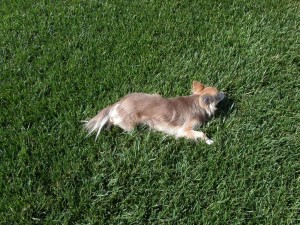 Turf-type Tall Fescue has become a very popular turf grass in many areas of the country. Although it is considered a cool-season grass, many improved cultivars have proven to be heat and drought tolerant. With proper management, tall fescue will provide green cover year around. Recommended for residential and commercial landscapes, golf courses and parks. Also utilized on athletic fields, recreation areas and roadside in northern areas.
Turf-type Tall Fescue has become a very popular turf grass in many areas of the country. Although it is considered a cool-season grass, many improved cultivars have proven to be heat and drought tolerant. With proper management, tall fescue will provide green cover year around. Recommended for residential and commercial landscapes, golf courses and parks. Also utilized on athletic fields, recreation areas and roadside in northern areas.
SHADE TOLERANCE: Very good performance in areas up to 70% shade. Requires 30% filtered or direct sunlight. Will gradually thin out in areas of total shade.
HEAT/COLD TOLERANCE: Has good heat tolerance and very good cold tolerance. See shaded portions of map below for suggested areas of use.
DORMANCY: If properly cared for, will maintain green color year around in most areas. Cool season grasses show slower growth in summer months. Can go into summer dormancy when irrigation is not applied.
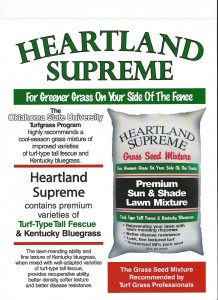 WATER REQUIREMENTS: Has medium to high irrigation requirements. Established fescue will tolerate brief periods of drought. Irrigation should be available in Southern areas.
WATER REQUIREMENTS: Has medium to high irrigation requirements. Established fescue will tolerate brief periods of drought. Irrigation should be available in Southern areas.
WEAR RESISTANCE-RECOVERY: Has very good tolerance to traffic after established. Recovers well from wear, especially in cool season. Is considered a bunch grass and does not spread. May become necessary to overseed.
Rules of Thumb Maintenance Fescue: The amount and frequency of watering, mowing and fertilizing depends upon the desired appearance of your turfgrass. Guidelines for maintenance procedures are offered below as good rules of thumb to follow on an as needed basis in maintaining healthy turfgrass with an attractive appearance.
WATERING: To avoid wilting and encourage deep root growth, apply 1 to 1 ½ inches of water in a single application every 5 to 7 days during hot and dry periods.
MOWING: Mow regularly with a reel or rotary mower at 2-3 inches. In summer months or shaded conditions, 3 inch cutting heights preferred. Irregular mowing practices may result in high buildups of thatch, which will require verticutting, mulching or removal. Suggested not removing more than 1/3 of the leaf growth during a single mowing.
FERTILIZING: Apply ½ to 1 lbs per 1000SF of a full analysis fertilizer containing higher nitrogen, phosphate and potassium, (such as 28-13-13) in September and late February. To maintain a deep green color and density additional nitrogen should be applied in April, May and October at rate of 1-1½ lbs per 1000 SF. Suggest obtaining a soil test for specific fertilizer requirements. Do not fertilize in June, July or August .
WEED CONTROL: Weed growth competes with turfgrass growth. Good maintenance practices of your turfgrass help eliminate weed problems. However, it may be necessary even under the best of care, to apply herbicides to maintain weed free turfgrass. Contact your local County Extension agent or herbicide dealer for recommendations for your type turfgrass.
Due to varying soil conditions and fluctuating weather patterns, it is impossible to offer general maintenance guidelines that are perfect for individual sites and situations. Please contact your local County Extension Office or Easton Sod Farms for specific questions.
LATITUDE BERMUDA GRASS
PATRIOT BERMUDA
MEYERS Z52
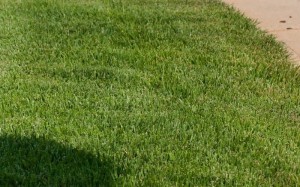 Zoysia is a flexible warm season turfgrass utilized for many applications. Meyers Z-52 has become the most popular of the Zoysia grasses because of its uniform medium texture and tolerances for heat and cold. It provides a plush, high density, deep green cover mid-April through early October in the Southwest. Recommended for residential and commercial landscapes, golf courses, athletic fields and recreation areas.
Zoysia is a flexible warm season turfgrass utilized for many applications. Meyers Z-52 has become the most popular of the Zoysia grasses because of its uniform medium texture and tolerances for heat and cold. It provides a plush, high density, deep green cover mid-April through early October in the Southwest. Recommended for residential and commercial landscapes, golf courses, athletic fields and recreation areas.
SHADE TOLERANCE: Good shade adaptation. Tolerates areas up to 50°/° shade or filtered sunlight. Will not tolerate heavy shade.
HEAT/COLD TOLERANCE: Very good heat and cold tolerance. Best overall cold tolerance of any warm season turfgrass. See shaded portion of map below for suggested areas of use.
DORMANCY: Enters dormant stage in winter months. Stops growing when temperatures drop below 55F for sustained period, turns tan winter color. Requires 65F ground temperature for significant growth.
WATER REQUIREMENTS: Is extremely drought tolerant. However, due to slow growing habit, should be watered regularly to encourage growth.
WEAR RESISTANCE-RECOVERY: Has best wear resistance of any turfgrass-tolerates heavy traffic. Spreads slowly by rhizome-slow to repair from injury.
RULES OF THUMB MAINTENANCE: The amount and frequency of watering, mowing and fertilizing depends upon the desired appearance of your turfgrass. Guidelines for maintenance procedures are offered below as good rules of thumb to follow on an as needed basis in maintaining healthy turfgrass with an attractive appearance.
WATERING: Will tolerate drought. To maintain attractive appearance apply 1 inch of water in a single application about once per week during hot or dry periods.
MOWING: For a high quality appearance keep mowed height 1 to 2 inches. Mow regularly with a reel or rotary mower allowing the clippings to remain. Irregular mowing practices may result in high buildups of thatch, which will require verticutting, mulching or removal. Suggested not removing more than 1l3 of the leaf growth during a single mowing.
FERTILIZING: Apply 11b per 1000 SF of full analysis fertilizer containing nitrogen, phosphate and potassium; such as 28-13-13 in mid-April. Additional nitrogen may be applied in June and August at a rate of 1 Ib per 1000 SF to encourage growth and maintain color. Suggest obtaining a soil test for specific fertilizer requirements.
WEED CONTROL: Weed growth competes with turfgrass growth. Good maintenance practices help eliminate weed problems. However, it may be necessary even under the best of care, to apply herbicides to maintain weed free turfgrass. Contact your local County Extension agent or herbicide dealer for recommendations for your type turfgrass.
NORTHBRIDGE BERMUDA GRASS
Northbridge is best for Home lawns, parks and golf/sports fields. Oklahoma State University has developed and released two new bermudagrass varieties called NorthBridgeTM and Latitude 36TM. The two new varieties are OSU’s first vegetative turfgrass releases since Patriot Bermudagrass in 2002. Both grasses are sterile hybrids with exceptional cold tolerance and winter damage is seldom seen in either. NorthBridge and Latitude 36 were selected for use in home lawns, parks and golf/sports applications from the southern United States to areas north of the transition zone. “Latitude 36 and NorthBridge offer the finer blades of Tifway with a cold hardiness equivalent to Patriot,” said Dr. Dennis Martin, OSU professor and extension turf specialist.
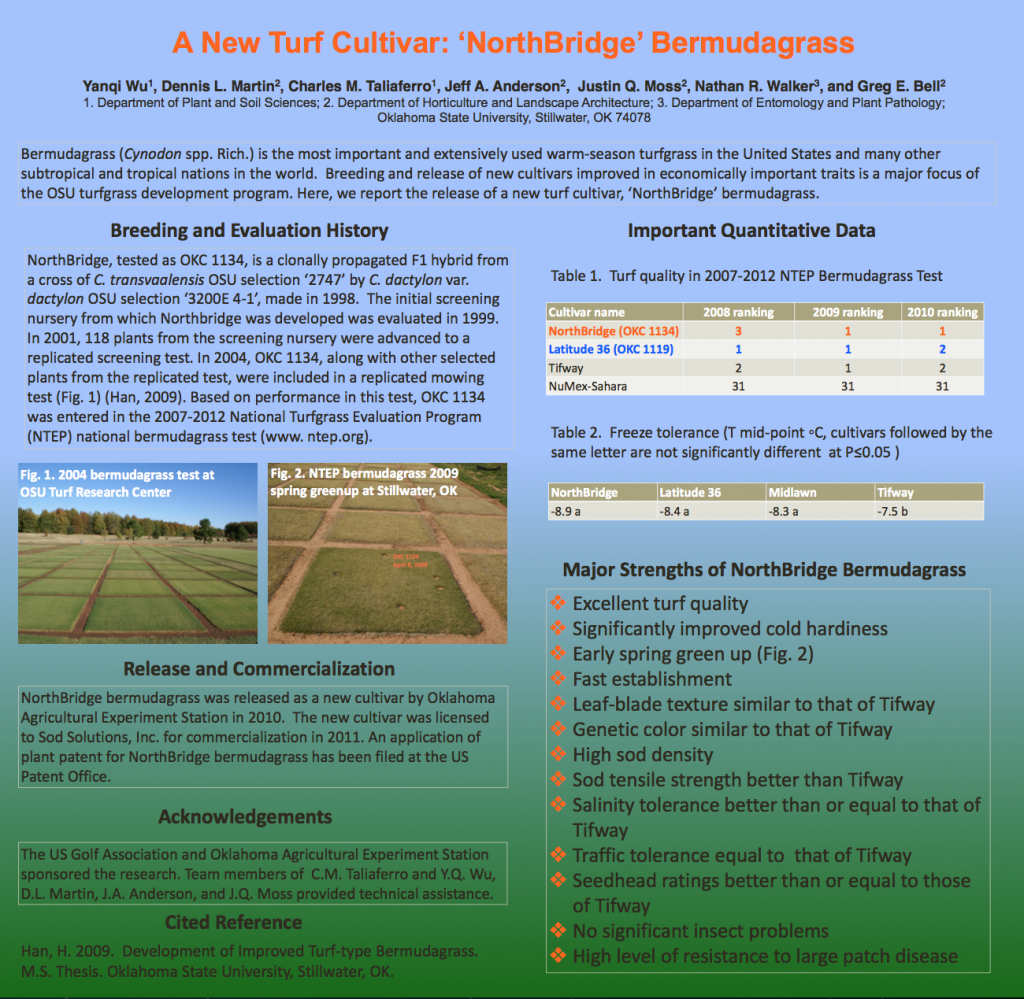
“Latitude 36 and NorthBridge offer the finer blades of Tifway with a cold hardiness equivalent to Patriot,” said Dr. Dennis Martin, OSU professor and extension turf specialist. “Latitude 36 and NorthBridge offer rapid sod production cycles and excellent handling characteristics for the sod producer. For the golf course superintendent, sports field manager and homeowner, these two new grasses offer outstanding beauty and performance; combining excellent cold hardiness, early green-up, fine texture, excellent density, excellent wear tolerance and rapid recovery from traffic.”
Both grasses recently received high performance reviews in the National Turfgrass Evaluation Program (NTEP) trials. Latitude 36 (OKC 1119) and NorthBridge (OKC 1134) were among the best of 31 bermudagrass varieties tested in overall turf quality and wear tolerance. This is a significant assessment as both plan to be used heavily in the golf and sports industries.
While they share many common traits, there are some differences in the two varieties. Latitude 36 has blades that are finer textured while NorthBridge is faster to establish.
PATRIOT BERMUDA
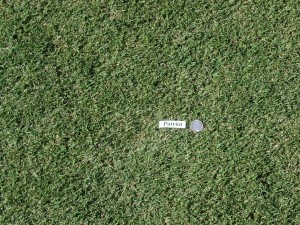 Patriot Bermuda is a medium-fine t extured hybrid Bermuda grass developed by Oklahoma State University turf research scientists. It is a dense, high performance turfgrass. Its appearance and quality is better than U-3 Bermuda and is on par with the best commercial varieties such as Tifway 419, Tifsport, and Tifgreen.
Patriot Bermuda is a medium-fine t extured hybrid Bermuda grass developed by Oklahoma State University turf research scientists. It is a dense, high performance turfgrass. Its appearance and quality is better than U-3 Bermuda and is on par with the best commercial varieties such as Tifway 419, Tifsport, and Tifgreen.
Improved Resistance to Spring Dead Spot:
Patriot has shown better resistance to spring dead spot disease than Tifway 419 and equal to Tifsport.
Wear Tolerance: Patriot has shown it retains stand density and visual quality in high traffic areas.
RULES OF THUMB MAINTENANCE: The amount and frequency of watering, mowing and fertilizing depends upon the desired appearance of your turfgrass. Guidelines for maintenance procedures are offered below as good rules of thumb to follow on an as needed basis in maintaining healthy turfgrass with an attractive appearance.
MOWING: Patriot provides an excellent material for tees when mowed at 3/8 of an inch. For fairways; a mowing height of Ѕ to ѕ inch is ideal. For other uses higher mowing heights provide excellent visual quality but should not be mowed over 1Ѕ inches.
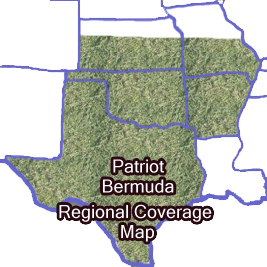 FERTILIZING: Mowing Patriot provides an excellent material for tees when mowed at 3/8 of an inch. For fairways; a mowing height of Ѕ to ѕ inch is ideal. For other uses higher mowing heights provide excellent visual quality but should not be mowed over 1Ѕ inches. Fertilizing Patriot responds well to fertilization. Keep pH in the range of 6.0-7.0 and the soil macro, secondary and micro nutrients in the optimum range. Patriot requires nitrogen fertility at 4-6 lbs. of actual N per 1,000 sq. ft. per year. Split into 3- 6 applications. Adjust fertility to local conditions and on level of visual quality and maintenance desired.
FERTILIZING: Mowing Patriot provides an excellent material for tees when mowed at 3/8 of an inch. For fairways; a mowing height of Ѕ to ѕ inch is ideal. For other uses higher mowing heights provide excellent visual quality but should not be mowed over 1Ѕ inches. Fertilizing Patriot responds well to fertilization. Keep pH in the range of 6.0-7.0 and the soil macro, secondary and micro nutrients in the optimum range. Patriot requires nitrogen fertility at 4-6 lbs. of actual N per 1,000 sq. ft. per year. Split into 3- 6 applications. Adjust fertility to local conditions and on level of visual quality and maintenance desired.
WATERING: Patriot is less drought tolerant than some other Bermudas. During dry conditions apply minimum Ѕ inch water 2 times per week to maintain color. Add more water if vigor recuperative rate is needed.
WEED CONTROL: Weed growth competes with turfgrass growth. Good maintenance practices help eliminate weed problems. However, it may be necessary even under the best of care, to apply herbicides to maintain weed free turfgrass. Contact your local County Extension agent or herbicide dealer for recommendations for your type turfgrass.
U3
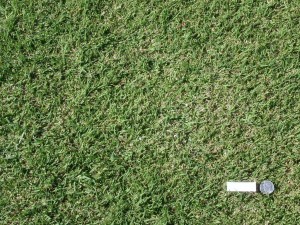
U-3 Bermuda is a selection of common bermuda. It was originally selected from test plots in Georgia because of its texture, cold tolerance, durability and rapid spread. It has a somewhat finer leaf texture and is more cold tolerant than other turf-type common bermudas. It is the most popular bermuda sod sold in Oklahoma and many other areas of the Southwest. It is recommended for residential and commercial landscapes, roadsides, golf courses, athletic fields and provides excellent erosion control in problem areas.
SHADE TOLERANCE: Has high light requirement-requires full sunlight most of day. Should not be used in shady areas.
HEAT/COLD TOLERANCE: Has very good heat tolerance. More cold tolerant than most turf type bermudas. See shaded portion of map below for suggested areas of use.
DORMANCY: Enters dormant stage in winter months. Stops growing when temperatures drop below 50F for sustained period, turns tan winter color. Requires 65F ground temperature for significant growth.
WATER REQUIREMENTS: Will tolerate sustained periods of drought if well established. However, responds well to irrigation during dry conditions if higher quality turfgrass desired. Should be kept moist during sustained periods of extremecold.
WEAR RESISTANCE-RECOVERY: Forms dense, deep rooted turf when well maintained. Excellent wear resistance and will withstand heavy traffic. Very good injury recoveryspreads rapidly by rhizomes in warm season.
RULES OF THUMB MAINTENANCE: The amount and frequency of watering, mowing and fertilizing depends upon the desired appearance of your turfgrass. Guidelines for maintenance procedures are offered below as good rules of thumb to follow on an as needed basis in maintaining healthy turfgrass with an attractive appearance.
WATERING: Apply 1/2″ to 1″ of water in a single application about once per week during hot and dry conditions. To promote a deep, durable root system; deep soaking water applications are preferred over short and frequent shallow water applications.
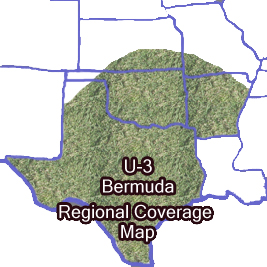 MOWING: For a high quality appearance keep mowed height 314 to 2 inches. Mow regularly with a reel or rotary mower allowing the clippings to remain. Irregular mowing practices may result in high buildups of thatch, which will require verticutting, mulching or removal. Suggested not to removing more than 113 of the leaf growth during a single mowing.
MOWING: For a high quality appearance keep mowed height 314 to 2 inches. Mow regularly with a reel or rotary mower allowing the clippings to remain. Irregular mowing practices may result in high buildups of thatch, which will require verticutting, mulching or removal. Suggested not to removing more than 113 of the leaf growth during a single mowing.
FERTILIZING: Apply 1/2 to 1 Ibs per 1000 SF of a full analysis fertilizer containing nitrogen, phosphate and potassium; such as 28-13-13 in mid-April and 9-24-24 in midSeptember. To maintain a deep green color, nitrogen may be applied monthly at a rate of 1 Ib per 1000 SF May thru August. Suggest obtaining a soil test for specific fertilizer requirements.
WEED CONTROL: Weed growth competes with turfgrass growth. Good maintenance practices help eliminate weed problems. However, it may be necessary even under the best of care, to apply herbicides to maintain weed free turfgrass. Contact your local County Extension agent or herbicide dealer for recommendations for your type turfgrass.
IRON CUTTER BERMUDAGRASS
From the wind-swept turfgrass plots of Enid, Oklahoma rises a new successor in cold-tolerant vegetative bermudagrass: IRON CUTTER! Iron Cutter is the result of a 10-year research and breeding partnership from the legendary turf and forage breeder Dr. Charles Taliaferro (breeder of vegetative bermudagrass Patriot, Latitude 36, and Northbridge), Johnston Seed Co., and exclusive marketer MVS Licensing. Iron Cutter entered the National Turf Evaluation Program’s (NTEP) 2013 Bermudagrass Trial as JSC-2- 21-18-V, where it emerged as an ideal choice for turf managers seeking better all-around consistency and the highest turfgrass quality across the entire reach of bermudagrass’s growing zones. (Table 1 at right.) Iron Cutter, a clonally propagated F1 interspecific hybrid that’s highly sterile, is a cross between Cynodon dactylon var. dactylon (L.) Pers. and Cynodon transvaalensis Burtt-Davy. In summer 2007, Iron Cutter was selected from humble roots, a small crossing block in an Enid, Oklahoma turf nursery, and grown as individual plants in a greenhouse during the winter of 2008. Emerging as a serious contender in late 2009, Iron Cutter was then isolated under the rigors of golf course fairway protocols to judge turf quality and other important characteristics like Spring Green-Up, and Traffic Tolerance. It proved elite there, and again in the NTEP, producing a 90% Score in the Maximum Top 25%, a metric of top performance for all trials in every location. The result is a crowning achievement for a new vegetative bermudagrass – superior scores over top cultivars like Tahoma 31, TifTuf, and Latitude 36 in key benchmarks like turfgrass quality, traffic tolerance, and spring density. Combined with stable genetics and consistent production, Iron Cutter is the new #1 choice for turf managers of all industries.
ESTABLISHMENT
Remove all construction debris, brush, and other undesired vegetation prior to grading the lawn site. If necessary, thin trees to make soil preparation and mowing easier. Slope the soil away from the house for drainage. Fertilizer and lime applications should be based on soil test results. Spread the fertilizer uniformly at the correct rate and mix thoroughly to a depth of 4 to 6 inches using a rototiller. After the incorporation, smooth grade or level the area to correct surface irregularities. Apply at least one inch of water and allow the soil to settle.
MAINTENANCE
Bermudagrass requires frequent, low rate N applications (4 to 5 lbs./1000 sq ft annually) to maintain the highest turf quality. Potassium, phosphorus, and micronutrients should be applied based on a soil test. For minimum maintenance, a complete fertilizer like 16-4-8, 10-10-10, or 12-4-8 can be applied in spring and fall with additional applications of nitrogen in the summer. Irrigation on an “as needed” basis is the most efficient way to maintain proper moisture. Irrigate at the first signs of moisture stress. Iron Cutter should be mowed at the recommended height of one-half to one and one-half inches.
Need a Quote?
BIXBY, OK:
918-369-5850
2504, 12300 S Memorial Dr, Bixby, OK 74008, USA
GLENPOOL, OK:
918-291-2332
13703 South Casper St W, Glenpool, OK 74033, USA
OKLAHOMA CITY, OK:
405-749-1622
11101 Broadway Ext, Oklahoma City, OK 73114, USA
DERBY, KS:
316-788-7763
1124 N McIntosh Rd, Derby, KS 67037, USA
WAYNE, OK:
405-449-7144
16619 S Hopping,
Wayne, OK 73095, USA
